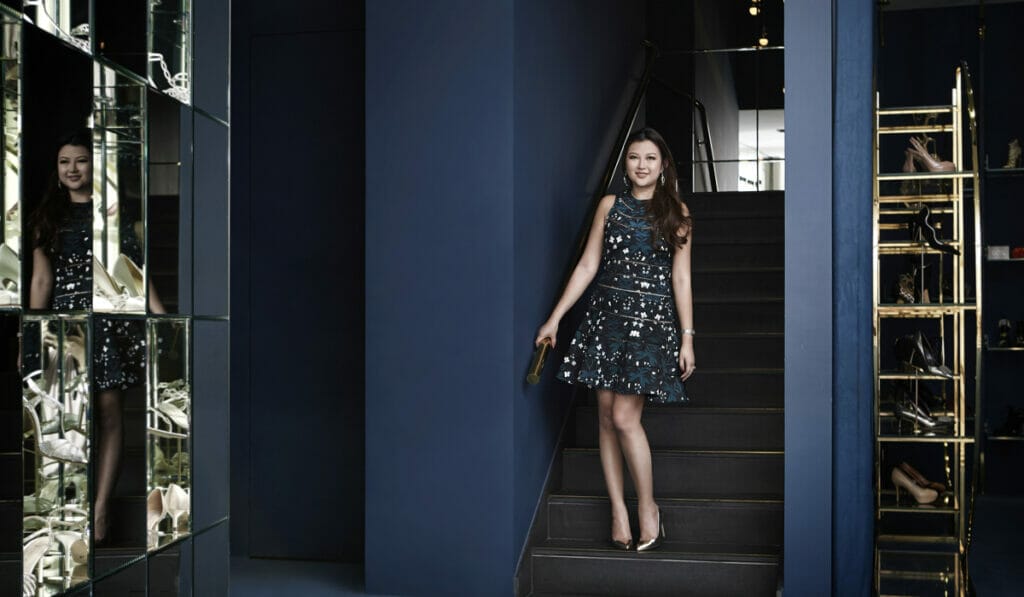Could you share with us your insights on the current market sentiment for luxury fashion?
Luxury fashion has, for awhile now, enjoyed a prolonged and substantial sales surge. However, the luxury fashion bubble is now facing difficulties and the focus has shifted from traditional personal luxury goods (PLGs) to experiential ideas and events. It is no longer enough to carry unique brands and hope that they will drive sales on popularity alone – demand has to be generated and this is where technology comes in. Never have we been in an era where social media and technology play such an influential role in what we do.
Current trends indicate that spending is shifting from traditional goods to experiences. Can fashion brands get into the action?
Storytelling is very important for luxury brands as the narration surrounding the product is just as important as the product itself. Digital and social media offer excellent opportunities for sophisticated storytelling and today’s technology allows luxury brands to use a level of personalisation never available before, going beyond demographics to considerations of an individual’s life stage, passions and priorities. Offering rich and highly personalised content will undoubtedly have an impact on the growth of businesses.

Currently, we’re seeing a ‘fashion immediacy’ concept of presenting a designer collection that can be purchased and delivered immediately after its runway debut. What are your thoughts on this ‘see now, buy now’ business model?
Consumer demand for instant gratification no longer follows the traditional fashion cycle and they lose interest the more time passes between product viewing and delivery. The ‘uber-isation’ of goods and services has also led to increasing demand for instant consumption from fashion. Fast-fashion retailers introduce new products every few weeks, which has also led to consumer demand for product newness from the luxury market.
It is likely that more brands will become open to selling certain items to consumers directly following fashion shows, but we will have to wait and see if it’s sustainable. I believe it is still in experimental mode as detailed numbers to support assertions of sales spikes are severely lacking. Certain brands such as Burberry and Michael Kors, who have been forerunners in this, have reported success with this model. However, they have a wide range and the resources to meet demands that smaller brands might not have. Furthermore, the ‘see now, buy now’ development presents additional challenges and increases logistical complexity, as realigning orders and delivery schedules with suppliers is required. Ultimately, quality ready-towear needs time for true creativity and quality to flourish, and detailed work requires the time and scale to produce.
The store of the future will place a huge focus on connectivity and convenience.
How do you think luxury fashion can remain a formidable presence with the current dominance of fast fashion?
There will always be demand for luxury fashion – luxury is an unparalleled experience incomparable with fast fashion retailers such H&M and Zara. I do think they have a symbiotic relationship with each other, though. Indeed, H&M has proven that with its advent of teaming up with the latest designers for its collections – Kenzo, Balmain and Jimmy Choo have all collaborated with great success. In essence, luxury has a certain aspirational and attainment value, a certain je ne sais quoi that will always allow them to have an almost invulnerable presence.
As we’re witnessing the advent of online and experiential shopping experiences, what do you think the store of the future looks like?
Technology being used in the stores is increasing, hence the requirement for a more seamless shopping experience. With consumer expectations to attain products quickly rising, fashion houses have no choice but to adapt to consumer demand for instant gratification. The store of the future will therefore place a huge focus on connectivity and convenience.
We also cannot ignore the realm of virtual and augmented reality. Retailers will increasingly make use of technological innovations such as 3-D virtual fitting rooms to facilitate size fitting, as well as leverage social media tools such as chatbots to service customers, sell products and even accept payments, which will allow for a more interdependent and cohesive relationship between online and offline.
PHOTOGRAPHY ROBIN LIEW
ART DIRECTION PENNY CHEW



